Do you want to know how to score your concrete perfectly? You’ve come to the right place! Scoring concrete is an art and science — knowing when, where, and how much of a cut must be made can make all the difference between beautiful results and problems that could create costly repairs later on.
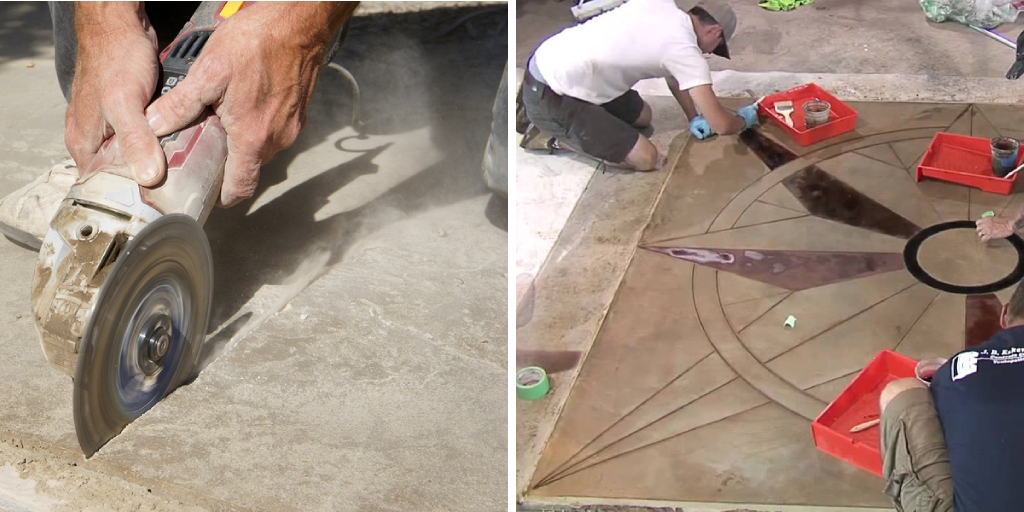
We’ll talk about why one would need to cut into their concrete, what cutting tools are available, safety considerations, and techniques for scoring effectively and beautifully, plus answer some frequently asked questions. Read on how to score concrete, if you’d like more information on this fascinating topic!
Needed Materials
To start, let’s first gather the necessary tools to successfully score concrete. These are:
- A Chalk Line or Any Mark-making Tool
- Tape Measure
- Concrete Saw (Hand-held or Walk-behind)
- Chisel and Hammer
- Safety Glasses, Gloves, and Earplugs
- Dust Mask or Respirator
Why is Scoring Concrete Necessary?
Scoring concrete is an essential step in achieving the desired outcome when working with this construction material. It may be required to control shrinkage cracks that naturally occur during the drying process, or simply for aesthetic purposes. Scoring can also allow for room to add decorative elements such as stains or stamping. In some cases, it may be necessary to create new expansion joints or repair existing ones.
Types of Concrete Scoring
There are two primary methods for scoring concrete:
Dry Scoring:
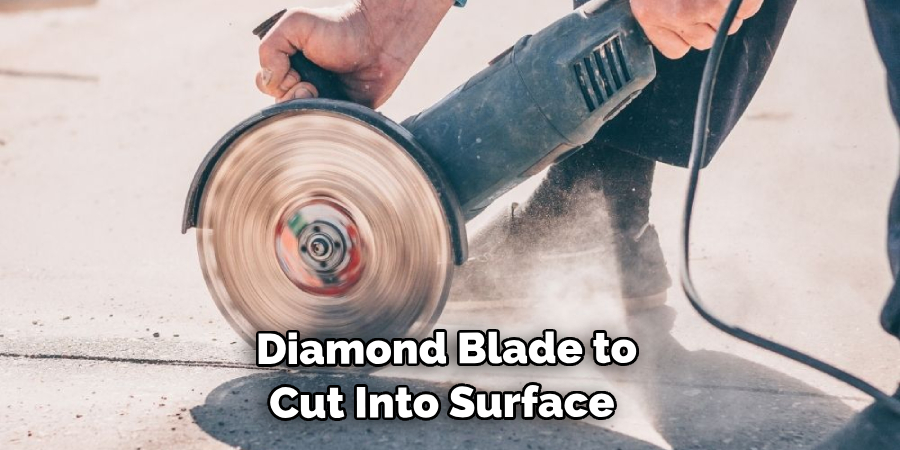
This involves using a handheld saw with a diamond blade to cut into the surface of cured concrete. It is used mostly for decorative purposes and creating patterns, such as squares and grids. Dry scoring is best done when the concrete is at least 28 days old and fully cured.
Wet Scoring:
This method involves using a walk-behind saw with a water-cooled diamond blade to score wet or green concrete. It is used for functional purposes, such as creating expansion joints or controlling cracks during curing. Wet scoring should be done within 6-12 hours after pouring the concrete before it becomes too hard.
Safety Considerations
Before starting any concrete scoring project, safety should be the top priority. Here are some essential tips to keep in mind:
- Always Wear Proper Protective Gear, Including Safety Glasses, Gloves, Earplugs, and a Dust Mask or Respirator.
- Make Sure to Have a First Aid Kit and a Fire Extinguisher Nearby.
- Avoid Wearing Loose Clothing or Jewelry That Can Get Caught in the Saw.
- Keep Bystanders at a Safe Distance From the Work Area.
- Be Cautious of Electrical and Plumbing Lines Before Making Any Cuts.
Needed Materials
In addition to the tools mentioned above, you may also need the following materials:
- Concrete Stains or Dyes for Decorative Scoring
- Joint Sealant for Newly Create Expansion Joints
- Patching Compound for Filling in Scored Lines
- Concrete Grinder for Smoothing Out Rough Cuts.
11 Step-by-step Guidelines on How to Score Concrete
Step 1: Measure and Mark
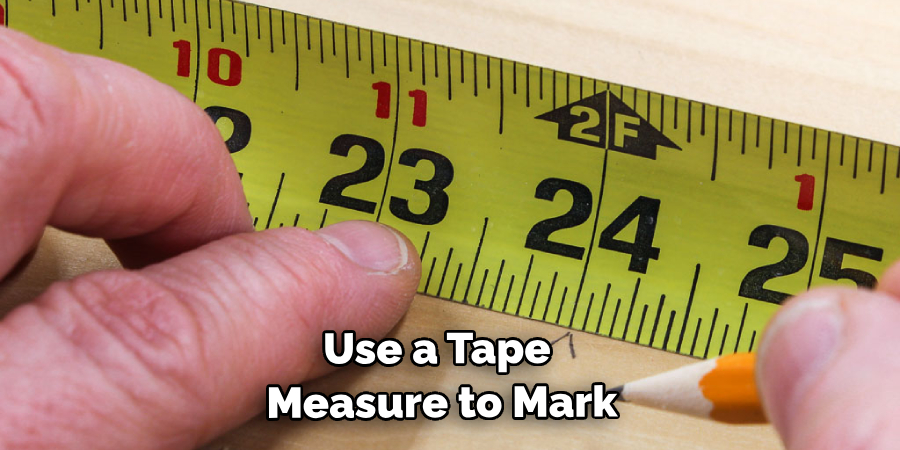
Use a tape measure to mark where the cuts will be made. Make sure they are straight and evenly spaced using a chalk line or any other mark-making tool. Otherwise, the design may look sloppy. It’s best to start with a smaller pattern and expand from there if desired. You can always add more cuts, but you can’t take them back once they’re made!
Step 2: Prepare the Saw
Follow the manufacturer’s instructions on how to set up and operate the saw safely. Make sure the blade is suitable for cutting concrete, and check that it’s sharp before starting. It’s also a good idea to have extra blades on hand in case one gets dull or damaged during the project. You may also need to adjust the depth of the cut depending on how thick your concrete is. But a general rule of thumb is to cut no deeper than ¼ the thickness of the concrete.
Step 3: Start the Saw
Turn on the saw, and let it come up to full speed before making any cuts. Make sure to keep your hands firmly on the handles at all times and maintain control over the saw’s movement. Otherwise, it could cause unwanted damage or severe injury. But don’t worry, with proper handling and safety precautions, the saw is easy to use. It’s designed for this specific task.
Step 4: Begin Cutting
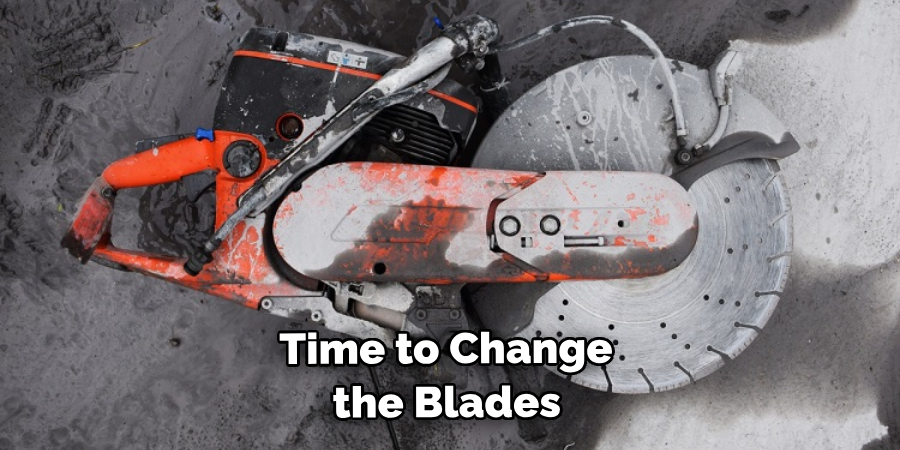
Once the saw is ready, start making your cut, following the marked lines. Make sure to keep a steady pace while also allowing the blade to do most of the work. If the saw starts to bog down or produce excessive dust, it may be time to change the blades. The key is to keep the cuts as straight and consistent as possible. You may also need to stop periodically and allow the saw to cool down, especially if it’s a hand-held one.
Step 5: Repeat the Process
Continue making cuts until you’ve completed the desired pattern. Remember to take breaks as needed, especially if you’re using a hand-held saw. Scoring concrete can be physically demanding, so it’s essential to rest and stay hydrated throughout the project. It’s also crucial to let the saw cool down before changing blades. But don’t wait too long, or the concrete may start to set.
Step 6: Clean Up

Once you’ve finished cutting, use a broom and dustpan to remove excess debris or dust from the surface. It’s essential to do this before the concrete sets, so it doesn’t get trapped in the scored lines. You can also use a vacuum cleaner or leaf blower for more thorough cleaning. But avoid using water, as it can cause the concrete to set faster and make cleaning more challenging. It’s okay if some dust remains; it can be removed later during the finishing process.
Step 7: Add Decorative Elements
If you’re scoring the concrete for decorative purposes, now is a good time to add any stains or dyes to enhance the design. Follow the manufacturer’s instructions and apply them evenly over the surface of the concrete. You can also use various tools such as brushes, sponges, or rags to create different effects.
Step 8: Fill in Scored Lines
If you’ve created new expansion joints, fill them in with a joint sealant to prevent water from seeping in. If you’re covering old ones, make sure to clean out any debris or dirt before filling them in. Use a putty knife to smooth the sealant over the scored lines and allow it to dry according to the product’s instructions. You can also use a patching compound to fill in any cracks or breakage in the scored lines.
Step 9: Smooth Out Rough Cuts
If some of the cuts don’t turn out as clean or even as you’d like, you can use a concrete grinder to smooth them out. It’s also helpful for removing any remaining debris or dust from the scored lines. Make sure to follow the manufacturer’s instructions on how to operate the grinder safely. The number of passes needed will depend on the thickness and hardness of your concrete.
Step 10: Allow Concrete to Cure
Once the scoring and finishing process is complete, allow the concrete to cure for at least 24 hours before walking or driving on it. If you’re working in cold weather, it may take longer for the concrete to set. Make sure to cover the area with plastic or a tarp if necessary to protect it from rain or other elements. Otherwise, the concrete may not cure correctly. You can also use a curing compound to help the process and ensure the concrete’s resilience.
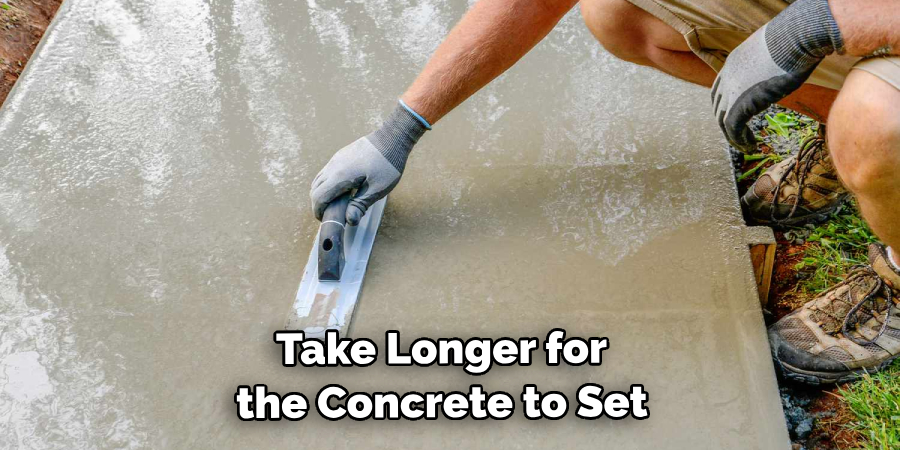
Step 11: Seal the Concrete
Once the concrete has cured, you can seal it to protect it from stains and damage. Make sure to choose a sealer suitable for your needs and follow the manufacturer’s instructions on how to apply it correctly. You can use a roller or sprayer to cover the surface evenly, and any excess sealer can be wiped away with a cloth. Allow the sealer to dry completely before using the area. Always reapply the sealer every 1-2 years to maintain its protection.
And that’s it! After following this article on how to score concrete, now have a beautifully scored and sealed concrete surface ready for use and admiration. Congratulations on completing this project with success!
Tips for Scoring Concrete Safely
- Always Wear Protective Gear, Such as Safety Goggles, Gloves, and a Dust Mask When Cutting Concrete.
- Make Sure to Follow the Manufacturer’s Instructions for Operating the Saw and Other Tools Used in This Process.
- Keep a First Aid Kit Nearby in Case of Any Accidents or Injuries.
- Take Breaks as Needed, Especially if Using a Hand-held Saw.
- Stay Hydrated and Well-rested Throughout the Project to Avoid Fatigue and Potential Mistakes.
- Use Caution When Handling the Saw, and Never Leave It Unattended While Running.
- If Possible, Have a Helper Assist With the Project to Make It More Manageable and Safer.
- Don’t Rush the Cutting Process; Take Your Time to Ensure Straight and Consistent Cuts.
- Keep Children and Pets Away From the Work Area at All Times.
- Follow Proper Safety Precautions When Using Chemicals or Sealers During the Finishing Process.
- Always Allow the Concrete to Cure and Dry Completely Before Using It.
Frequently Asked Questions
Q1: Can I Score Concrete Without a Saw?
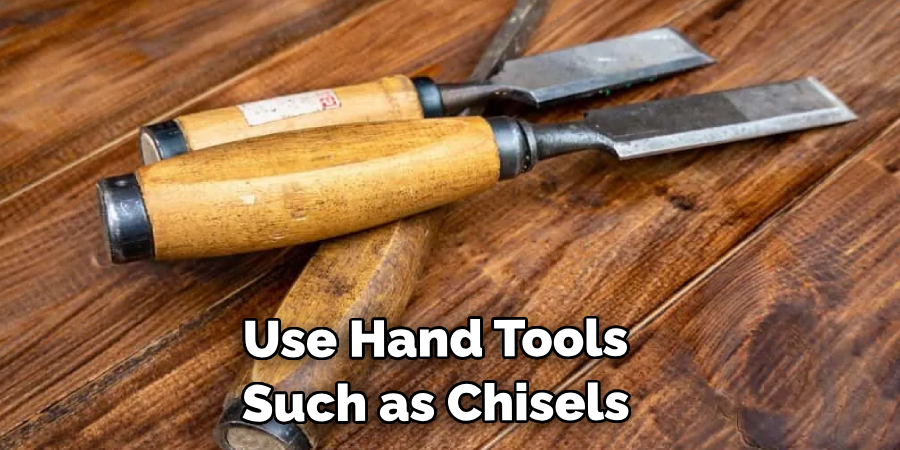
A1: While using a saw is the most common and efficient method for scoring concrete, you can also use hand tools such as chisels or grinders. However, this may not produce clean and precise cuts. It’s best to use a saw for optimal results.
Q2: How Long Does it Take for Concrete to Cure?
A2: The curing time varies depending on factors such as temperature, humidity, and the type of concrete used. Generally, it takes 24-48 hours for concrete to cure, but in cooler temperatures or high humidity, it may take longer.
Q3: Can I Score Concrete Myself, or Do I Need to Hire a Professional?
A3: With the proper tools and safety precautions, scoring concrete can be a DIY project. However, it requires physical labor and knowledge of handling equipment safely. If you’re not confident in doing it yourself, it’s best to hire a professional for the job.
Q4: How Do I Clean and Maintain a Scored Concrete Surface?
A4: To clean scored concrete, use a broom or leaf blower to remove debris regularly. You can also use a mild detergent and water to scrub any stains or spills. As for maintenance, it’s essential to reapply the sealer every 1-2 years for protection against stains and damage.
Conclusion
In the world of construction, it is essential to be aware of the importance of correctly scoring concrete. We have looked at the three main methods for scoring concrete and discussed why it is important to keep proper scouring measures in place. It is obvious that having a professional contractor complete any job relating to concreting can reduce errors and save time in the long run. With knowledge on how to correctly score concrete, you will be better prepared for whatever project you or your company are investing in.
Look no further if you need more information on scoring concrete because we have covered everything from what tools are needed to methods that are best for certain projects. So get out there and get an accurate score before starting any project! No longer hesitate to go ahead with any concreting jobs, as we have provided all the information you need. Go now and get that amazing finish quality you have been dreaming of! Thanks for reading this article on how to score concrete.
